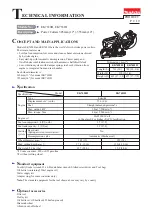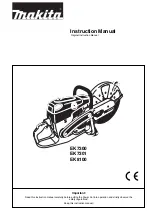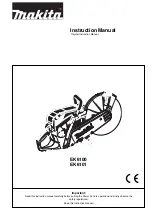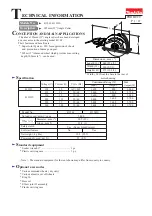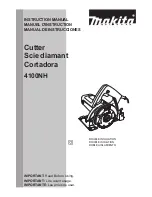
7
the wide side of the stone against the inner face of the blade. NOTE - the
stone is two-sided: coarse and fine. Use the coarse side for large burrs or
nicks, and the fine side for smaller ones. Move the stone back and forth from
end to end of the blade. Use caution not to rub the anvil of the cutter with the
stone, or undue wear may result. The stone should contact the blade only.
CHANGING THE BLADE - WARNING:
The blade is extremely sharp, and it
can be slippery and difficult to hold. Use extreme caution! The use of gloves
is recommended. To remove and replace the blade, first remove the leverage
handle, fence, and cut guide. Turn the cutter upside down and place the bed
flat on a large, stable surface such as a solid table that will not tip or move
(Figure 10). Turning the cutter upside down ensures the blade will rest on the
blade carrier during the process due to gravity, and prevents the blade from
unexpectedly falling off. Move the connector tube to the top of its travel. This
increases the space between the blade and the anvil and provides more room
to work.
Remove the 7 blade screws using a
Phillips screwdriver. Hold the blade
against the blade carrier when re-
moving the last screws by contact-
ing a flat surface of the blade body
away from the sharpened edge.
When removing a blade or installing
a new blade, it is advisable to hold it
by its sides.
When installing a new blade, it must be installed with the edge up and the
bevel out in relation to the bed. Be sure the blade carrier is cleared of all de-
bris before installing the blade. Fasten the blade to the carrier with the seven
blade screws.
WARNING:
Some dust created by power sanding, sawing, grinding, drilling,
and other construction activities contains chemicals known to the State of
California to cause cancer, birth defects or other reproductive harm. Some
examples of these chemicals are:
rMFBEGSPNMFBECBTFEQBJOUT
rDSZTUBMMJOFTJMJDBGSPNCSJDLDFNFOUBOEPUIFSNBTPOSZQSPEVDUTBOE
rBSTFOJDBOEDISPNJVNGSPNDIFNJDBMMZUSFBUFEMVNCFS
Your risk from these exposures varies, depending on how often you do this
type of work. To reduce your exposure to these chemicals: work in a well-
ventilated area, and work with approved safety equipment, such as those
dust masks that are specially designed to filter out microscopic particles.
CONNECTOR
TUBE AT TOP
OF TRAVEL
Figure 10
REMOVE
FENCE SO BED
RESTS FLAT ON
TABLE










